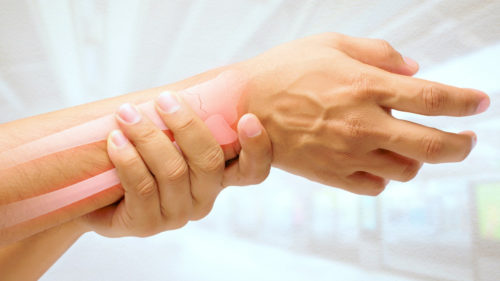Is It a Normal Fracture or a Symptom of Osteoporosis?

Are you surprised to experience a fracture, only due to a mild slip or strain, or even because of a cough or sneeze? Osteoporosis can be the reason behind.
What is Osteoporosis?
Osteoporosis is a medical condition which occurs due to decrease in bone density, resulting in weakening of bones. This disorder in severe cases leads to abnormally porous bones that are compressible like a sponge.
As the bones become brittle due to Osteoporosis, it results in frequent fractures, even due to injuries that would not have caused a bone to fracture. Although these fractures can occur in any skeletal bone, the spine, hips, ribs, and wrists are common areas of bone fracture.
Who is at risk?
Although women at menopause and old people are common sufferers of this disorder, it can occur to anyone. People with small body frame or low body weight are also at higher risk of developing Osteoporosis.
Smoking and Osteoporosis:
Smoking is one of the most serious causes of Osteoporosis. According to an article published on the official website of WHO, “Current smokers lose bone at faster rates than nonsmokers, and by age 80 this can translate into 6% lower bone mineral density.”
Other Risk Factors:
1. Race- Americans and Asians are more prone to this ailment
2. Family history- If any of your sibling or parent is suffering from Osteoporosis, you are also at a risk of developing it.
Hormone levels:
1. Sex hormones- Lowered levels of Estrogen in women at menopause is a prominent factor for the development of osteoporosis. Levels of testosterone in men also decrease with age which is also a risk factor.
2.Thyroid problems- Overactive thyroid hormone can lead to Osteoporosis.
Dietary Factors:
1. Malnutrition- Ill eating habits can significantly harm your bone health, thus leading to Osteoporosis.
2. Low calcium intake- Calcium is the core mineral that strengthens bones; thus a deficiency of calcium leads to low bone density, and ultimately Osteoporosis.
Symptoms
Usually, a person suffering from Osteoporosis does not notice any evident symptoms until a fracture occurs; following are occasional symptoms of this disorder:
1. Frequent fractures, even due to minor injuries
2. Stooped posture
3. Back pain, typically caused by a fractured or collapsed vertebra
4. Loss of height over time
How is it Diagnosed?

Osteoporosis can be diagnosed by testing your bone density; this can be done via special X-ray based scan called the DEXA scan. Expanded as Dual-energy x-ray absorptiometry, DEXA measures the number of X-rays absorbed by the bones and correlates it with the bone mineral density.
Nurture vs. Nature.
Bone renewal is a continuous process; new ones are constantly made and the old ones are broken down. Our body mass increases steadily when we are young since the process is in full swing; but as people age, bone mass falls faster than it is created. Most people reach their peak bone mass by early 30s; the peak bone mass partly affects the possibility of developing Osteoporosis. Your peak mass is inversely proportional to the chances of you developing Osteoporosis. Thus, young people should exercise regularly and consume a nutritious diet rich in calcium, magnesium and vitamin D to prevent the development of Osteoporosis as they age.
Therefore, if a mild injury leads to a fracture, you need to see a doctor and get a proper diagnosis done.
Disclaimer: This content including advice provides generic information only. It is in no way a substitute for qualified medical opinion. Always consult a specialist or your own doctor for more information.
